Picture a band rocking out and it’s likely you will see a wall of roaring amps behind them: huge eight-speaker cabinets pumping out maximum-volume rock and roll. We bass players have a rather more dependant relationship with our amps than guitarists, as an unplugged bass doesn’t make very much sound at all. Over the last few years, the range of technologies, shapes, and sizes of the bass amp has become almost overwhelming. In this article, we’ll explore the impact of amps on the quest for that elusive perfect bass tone.
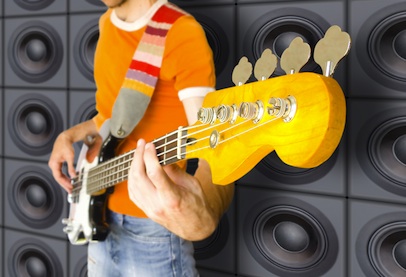
One of the key differences between electric bass and electric guitar is the approach to amplification. An electric guitar recorded directly into the mixing desk sounds thin and uninspiring, while a bass can sound quite acceptable (especially if it has on-board EQ). We’re about to get pretty technical, so if you need a refresher on amps and distortion try these articles:
For an electric guitar, the amplifier and speaker are integral parts of the sound. Guitarists love the harmonics that hard-driving valve amplifiers bring, and the tonal shaping that the speakers apply. In contrast, bass players typically favour a more hi-fi approach to amplification. Valve amplifiers with sufficient power to drive a stage rig, due to their massive size, weight, and cost are relatively rare. Even the majority of professional bassists still choose solid-state amplification rather than valve amps.
Example: Guitar Amp vs. Bass Amp
To give us an idea of how bass amplification differs from guitar amplification let’s compare the set-up of a rock guitarist (in this case, Queen’s Brian May) to a typical bass set-up.
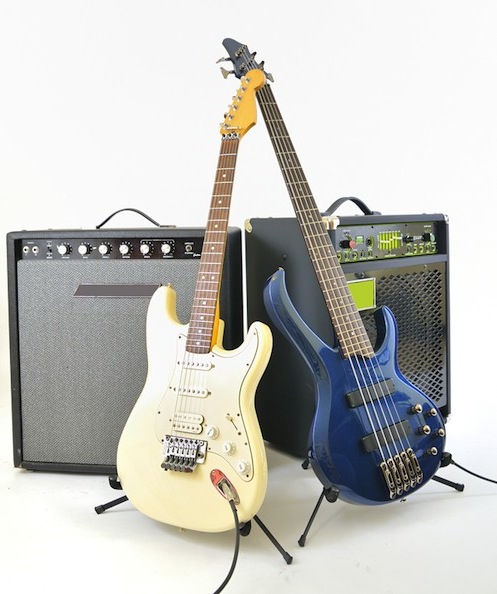
In the guitarist’s case, we start off with a booster pedal cranking up the signal to overload the preamplifier stage of a Vox AC30 amplifier. The EQ section is quite limited with relatively subtle tone shaping. The power amplifier is rated at 30 Watts. Cranked to the full power output, it produces power-amp distortion and compression as it struggles to keep up with the input signal. In turn, the speakers shape the sound even further due to their open cabinet running at nearly their full-rated output.
As you can see, the story of the guitar amp is each section cascading into the next, introducing more harmonics, more compression, and more distortion. All this limits the options for tonal shaping.
A modern pro bass amplifier, on the other hand, is in many respects just the opposite! The bassist will typically set input gain just below the level that might cause clipping in the preamplifier (using a ‘peak light’ to help him dial it in). The EQ section will usually feature at least four bands, but could have as many as 15, each with a wide range of cut and boost. Because of the bass’s high dynamic range, it may have a compressor or limiter built in, which stops peak distortion (of which more later!). On bass amps that do feature overdrive, it tends to be more of an add-in effect like a stomp box, rather than an integral aspect of the amp.
While our guitar amp was running flat out, bassists do not find power-amp distortion desirable so they keep their levels in check. Couple that lower-level input signal with the serious juice needed to really amplify bass frequencies and you can see why the power of pro bass amps tend to be a minimum of 300 Watts – and may be well over 1,000!
Speaker cabinets of bass amps are enclosed and ported to keep the low end as tight and focused as possible, and the speakers will be designed to comfortably handle their specified power ranges without distorting. For example a large, 15-inch speaker cabinet with 10-inch speakers for the core bass sound and a small horn to handle the high frequencies on top.
As you can see, a modern bass amp presents a far more high-tech, hi-fi approach than the more rootsy approach favored by guitarists since the ’60s.
The complexity and flexibility of the EQ section in many bass amps can be intimidating, and this is where some frequency ear training will pay dividends. My personal opinion is that the amps with dozens of EQ bands are overkill. I’ve always found I could dial in a decent tone with no more than four decently-voiced controls.
Breaking the Back or Breaking the Bank
There are four things everyone wants out of a bass amp:
- Great tone
- Earth-shaking power
- Affordable price
- … and a size and weight that won’t cause back trouble in old age (or sooner!)
Unfortunately, you usually can have only three out of the four: a cheap and loud amp will usually be crushingly heavy, and the new generation of lightweight amplifiers and cabinets will usually set you back some serious cash.
In an amplifier, the main factor influencing weight is its efficiency. An inefficient amplifier needs a big, heavy transformer to supply all the power it needs, and all that inefficiency produces a lot of waste heat. That leaves the amp needing big heat sinks and fans, and it will need to be carefully packaged in a big chassis to prevent overheating.
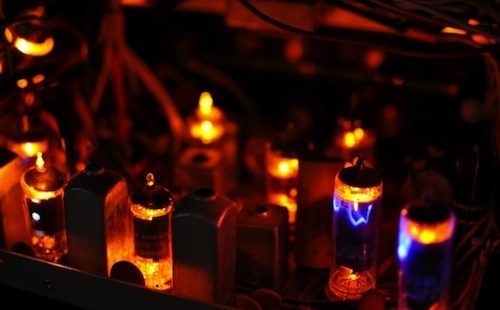
The efficiency of an amplifier depends primarily on the technology used for amplification. There are several types of amplifier on the market today:
- Valve amplifiers sound great, but in terms of bang for your buck they are expensive and very heavy. The fact that you can see the tubes in a valve amp glowing red hot should give you a clue that they aren’t the most efficient devices in the world!
- Class AB transistor-based amplifiers are by far the most popular type of amp out there now, and have been the gold standard of power-to-weight ratio for some time, but some new kids on the block are now making waves…
- Class G amplifiers change their internal voltages in a clever way to maximise efficiency. This lets the amp run cooler, and so allows the amp to be lighter and smaller. Some high-end manufacturers such as EBS use this technology.
- Perhaps the most exciting development in bass amplification in the last few years has been the Class D amplifier. Class D amps use a technology very similar to that of the switched-mode power supply that powers the charger for your mobile phone or laptop. A class D amp runs at full power all the time, but switches on and off at very high speeds to create the power supply. This means that the amp can have near-perfect power efficiency, and thus be very small and light. The downside of all that switching is the introduction of noise into the signal, which must then be filtered out. Because of this, people often use class D amplifiers in places where sound quality plays second fiddle to raw power—for example, in the amps powering the subwoofers in pimped-out cars.
As the relentless march of technology has allowed faster switching and better filtering, Class D amplifiers have moved on the point where they can be used for high quality bass amplifiers as well.
One pioneer of this technology is the lightweight bass amp specialist, Mark Bass, who have attracted the endorsement of some big-name players. Other manufacturers, such as Yamaha, Ibanez and TC Electronic, are coming on board too, ushering in a new era of super-light, super-loud amps. Currently you have to pay a hefty price for all that wizardry, but prices should gradually come down – so perhaps one day you won’t have to make the choice between breaking your back and breaking the bank!
Taking a Cab
As if hefting the amps around wasn’t enough bother on its own, you also have the speaker cabinet to consider. For an explanation of the terminology and technology of speaker cabinets, see my Wired for Sound article series. A bass cabinet needs to be sturdy to dampen any unwanted vibrations, and large enough to provide the resonant areas and ports that can produce solid bass frequencies.
The upshot is that some professional bass cabinets can weigh up to 80kg! (175lb)
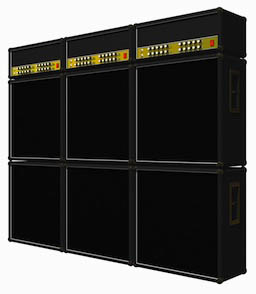 For those of us who don’t have the benefit of roadies, many manufacturers now make relatively lightweight speaker cabinets. The cabinet walls are light but strong wood ply (poplar, for example), and the speakers have lighter drivers thanks to the use of powerful but light rare-earth (such as Neodymium) magnets. As with amplifiers, this blending of technology and craftsmanship comes at a cost. Cheaper cabinets may be made of low-grade particleboard, which has less-desirable acoustic properties.
For those of us who don’t have the benefit of roadies, many manufacturers now make relatively lightweight speaker cabinets. The cabinet walls are light but strong wood ply (poplar, for example), and the speakers have lighter drivers thanks to the use of powerful but light rare-earth (such as Neodymium) magnets. As with amplifiers, this blending of technology and craftsmanship comes at a cost. Cheaper cabinets may be made of low-grade particleboard, which has less-desirable acoustic properties.
Speaker cabinets are also come in smaller “traveler” or “mini” sizes, but be aware: standard bass cabinets are the size they are for a reason. Smaller sizes always have compromised low-end projection compared to their larger cousins.
Bass speakers tend to come in three sizes: 10, 12, and 15 inches. An enclosure with four 10-inch speakers has long been considered the classic configuration for a bass cabinet, providing a punchy sound with good high-frequency reproduction.
Ten-inch drivers may struggle to reproduce the lowest notes though, especially for a detuned or extended-range bass, so a bassist may choose to add a second cabinet with a single 15-inch driver to handle the extreme low end. In styles where the low end predominates, a bassist may simply use one of these on its own. You don’t find 12-inch speakers in bass cabinets very often, but they can provide a good compromise between the 10-inch and the 15-inch, where space or budget prevents you from using both.
Manufacturers often fit out their bass cabinets with a single tweeter to provide high frequencies, and sometimes they attach a horn to reinforce the sound. But some bass players complain that horns add brittleness to the sound, so you may want to look for a cab with an adjustable tweeter. That way you can experiment and find the sound you want.
There are a variety of ways your amplifier choice will affect the tone of your instrument. Be sure to keep your levels moderate, use a compressor or limiter as appropriate, and make sure your amp has enough power to make up the volume you need. EQ controls on your pre-amp and the combination of driver sizes you choose will have a big effect too.
Next time on Bass Tone we’ll be looking at audio effects – not just for guitarists any more!

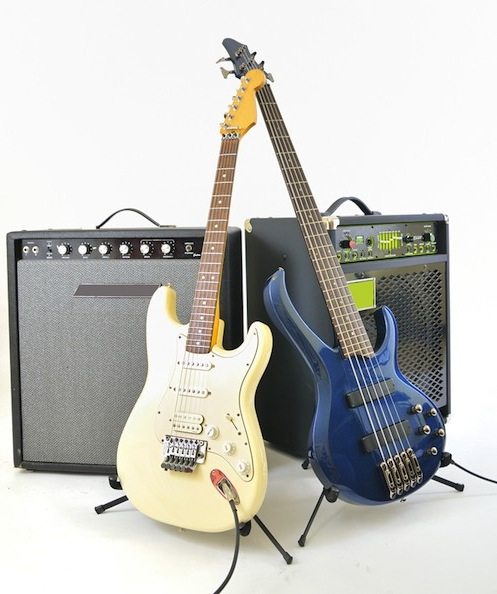







Class D amps are complete trash in providing Earth Shaking Power They LACK it! They may have the output power, but it is cheap crappy sounding trash. A/B and G amps are the only options in my opinion as they CAN provide the Earth Shaking bottom end!!
You clearly weren't there when I plugged my old 500W Mark Bass into an Ampeg 8×10.
Does it count as Earth Shaking Power if you make the drummer run out of the room? :)
As for tone, this sounds pretty sweet to me: http://www.youtube.com/watch?v=9OMCaiFJ-MM